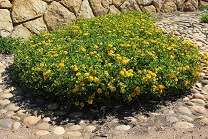Weeds of National Significance
The Australian Government has identified 32 Weeds of National Significance (WoNS) based on their invasiveness, potential for spread and environmental, social and economic impacts. A list of 20 WoNS was endorsed in 1999 and a further 12 were added in 2012.
Information on the selection process is available on the Weeds Australia website.
Local weeds on the WoNS List
African Boxthorn - Introduced as a garden or hedge plant in the mid-1800s. Now a serious weed, particularly on neglected land in arid temperate Australia. May produce thickets that become refuges for feral animals.
The City of Greater Geraldton has made large investments in recent years to control Boxthorn in priority areas such as the Greenough and Chapman Rivers. In 2018, the City is holding regular ‘Boxthorn Blitz’ Workshops to enable community to tackle smaller Boxthorn plants and prevent reinfestation in these priority areas. Attendees to these sessions will be supplied with a ‘Boxthorn Blitz Kit’, containing gloves, chemical, secateurs and a small information booklet to help with identification. More Boxthorn information here
Please contact us at environmentalplanning@cgg.wa.gov.au for more information or to register your interest in participating at the next Boxthorn Blitz session.
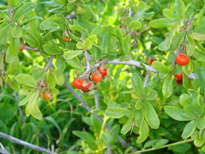
Boneseed - First recorded in Australia in 1852 and commonly cultivated in gardens. This plant is a major environmental weed in south-eastern Australia. Widespread in winter rainfall areas and generally replaces Bitou Bush along the NSW south coast. Not an agricultural problem as bushes are susceptible to trampling and are eaten by stock.
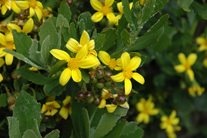
Asparagus - Asparagus is widely cultivated for its edible green shoots (spears). It dies back to ground level in winter, producing a succession of shoots through late spring and early summer. Asparagus is widely naturalised near habitation in cooler parts of Australia and in temperate areas around the world. It may be a minor weed in some places.
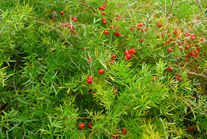
Tamarisk - Introduced to Australia in about 1930. Salt tolerant and drought resistant. Useful as a windbreak and shade tree and its timber can be used for fence posts and firewood. Also used to stabilise sand dunes and to revegetate disturbed arid areas, a notable example occurring at Broken Hill, NSW. Now naturalised along 400 km of Finke River, NT and along Gascoyne River near Carnarvon, WA. Crowds out native vegetation. Salt excreted from leaf glands often increases surface soil salinity and eliminates less salt tolerant plants. Potentially a threat to many inland rivers.
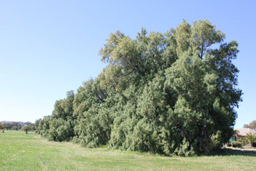
Lantana Camara L. - Lantana is one of Australia’s most damaging invasive weeds. It is an aggressive invader that has naturalised in eastern Australia under a wide range of climatic conditions and is recognised as a major weed of pastures, plantations and native forests. Since its introduction to Australia as an ornamental plant in the early 1840s, lantana has spread to infest more than four million hectares of eastern Australia, from southern New South Wales to northern Queensland, and has invaded areas of the Torres Strait Islands, Northern Territory and Western Australia. In recognition of its impacts on primary industries, conservation and biodiversity, and the extent of its distribution in Australia, lantana has been named a Weed of National Significance.
